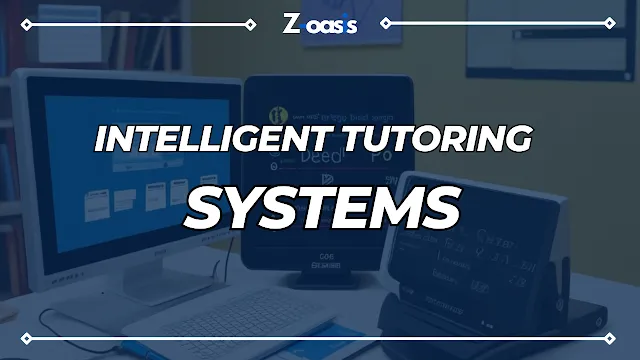Education has always been ripe for innovation, and there's no innovation quite as groundbreaking today as artificial intelligence (AI). Enter Intelligent Tutoring Systems (ITS), a potent iteration of AI incorporated into educational landscapes, aiming to culminate in personalized and adaptive learning experiences. Picture a virtual tutor, meticulously guiding students through intricacies, providing bespoke learning modules, and closely monitoring their educational journey. Just like a human tutor, but powered by AI!
 |
| Intelligent Tutoring Systems |
Delving into the Realm of Intelligent Tutoring Systems
To truly appreciate the scope of ITS, we have to understand them. Picture an AI playing the part of a tutor in a one-on-one session with a student. Intelligent Tutoring Systems employ AI alchemy, like machine learning, natural language processing, and expert systems, to deliver personalized instruction and support tailored to a student's learning style, preferences, and capabilities.
These systems make up an ensemble of three principal components - the student model, the domain model, and the tutoring model. The student model is like the tutor's digital cheat sheet about the student - their knowledge base, skills, and learning preferences. The domain model packs in the subject matter being taught and provides the necessary pedagogical ammunition. The tutoring model, on the other hand, builds out strategies and techniques to deliver personalized instruction and support.
The Perks of Intelligent Tutoring Systems
Intelligent Tutoring Systems serve as the silver bullet in education with a plethora of benefits that bolster learning outcomes and student engagement. Let's unpack them!
Tailored Learning Pathways:
ITS allows adjusting the breadth, depth, and complexity of instruction to align with each student's needs. By delivering customized instruction, these systems can bridge educational gaps, stimulate advanced learners, and render appropriate support to every student.- Instantaneous Feedback: The systems' ability to provide real-time, targeted feedback is undoubtedly a game-changer. This timely response inculcates a cycle of learning, unlearning, and relearning, whereby students promptly rectify their mistakes, reinforce their understanding, and improve performance.
One-on-one Support:
ITS caters to every student with personalized assistance such as additional explanations, examples, and resources. This makes overcoming hurdles less daunting, instils confidence and nurtures a comprehensive understanding of the subject matter.Assessment on the Go:
Continuous monitoring is the mantra of ITS as they regularly keep tabs on student performance. This constant assessment grants teachers invaluable insights into their students' learning patterns and performance, aiding them in making calculated instructional decisions.Interactive Learning Experience:
By incorporating interactive elements like multimedia, simulations, and gamification, these systems make learning delightful, interesting, and engaging. They inspire learners to be proactive participants in their learning process.
Navigating the Challenges of Intelligent Tutoring Systems
While the promise of Intelligent Tutoring Systems is formidable, it must be seen through the lens of the challenges that come with implementing them in educational settings.
Resource Demands:
Development and implementation are not simple tasks. They demand ample resources and time. Both educational and AI expertise are required to craft the content, algorithms, and interfaces. Integrating them into existing educational infrastructures might pose a complex and costly affair.Data Privacy and Security:
Safeguarding a large amount of student data these systems collect is paramount. They must toe the line of data protection regulations while providing students with complete confidentiality.Instructional Alignment:
Formulating ITS must align with effective pedagogical principles to ensure that the instructions provided are impactful. Focusing on theories that foster deep learning and critical thinking is a must.User Acceptance:
Resistance might be met by educators, students, or parents sceptical of the benefits of AI-based instruction. Garnering their trust, providing adequate training, and demonstrating the systems benefits will be key to smooth implementation.Ethical Concerns:
Ethical issues pertaining to data privacy, algorithmic bias, and possibly replacing human tutors with AI systems hang heavy over ITS. A balanced approach centred on student's well-being and rights should be the at the core of such systems.
Conclusions
Intelligent Tutoring Systems can reinvent learning, extending personalized, adaptive instruction to students. However, minding the development costs, aligning with pedagogical practices, securing data privacy, ensuring user acceptance, and addressing ethical considerations is crucial for their successful implementation. Grounded on the power of AI, Intelligent Tutoring Systems could be instrumental in engineering more effective and engrossing learning experiences for students.